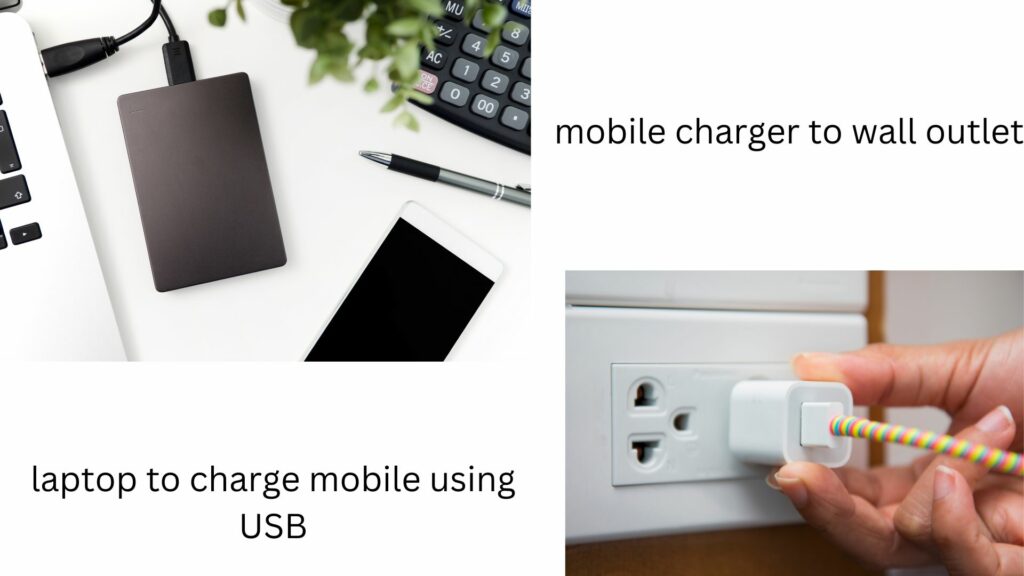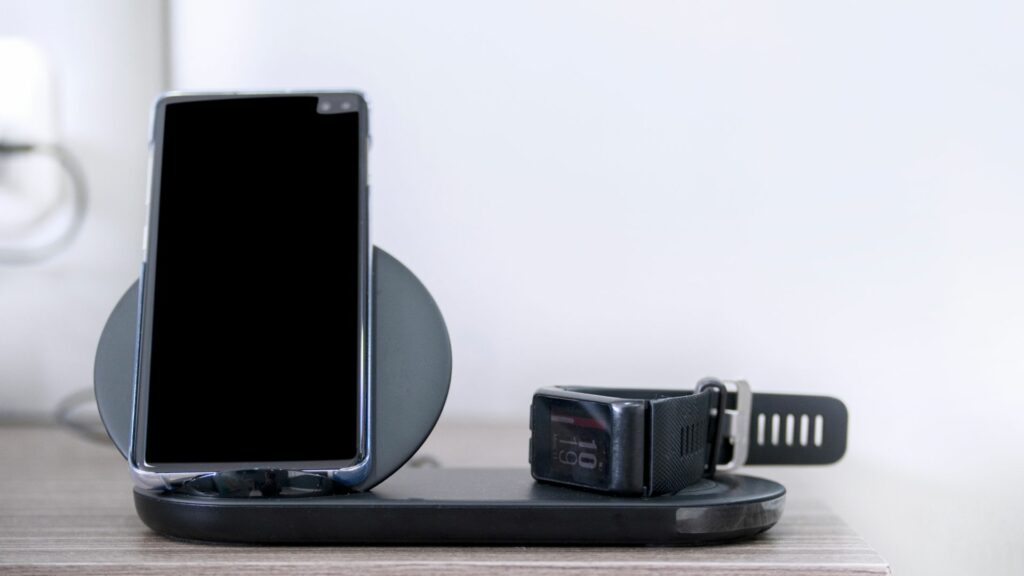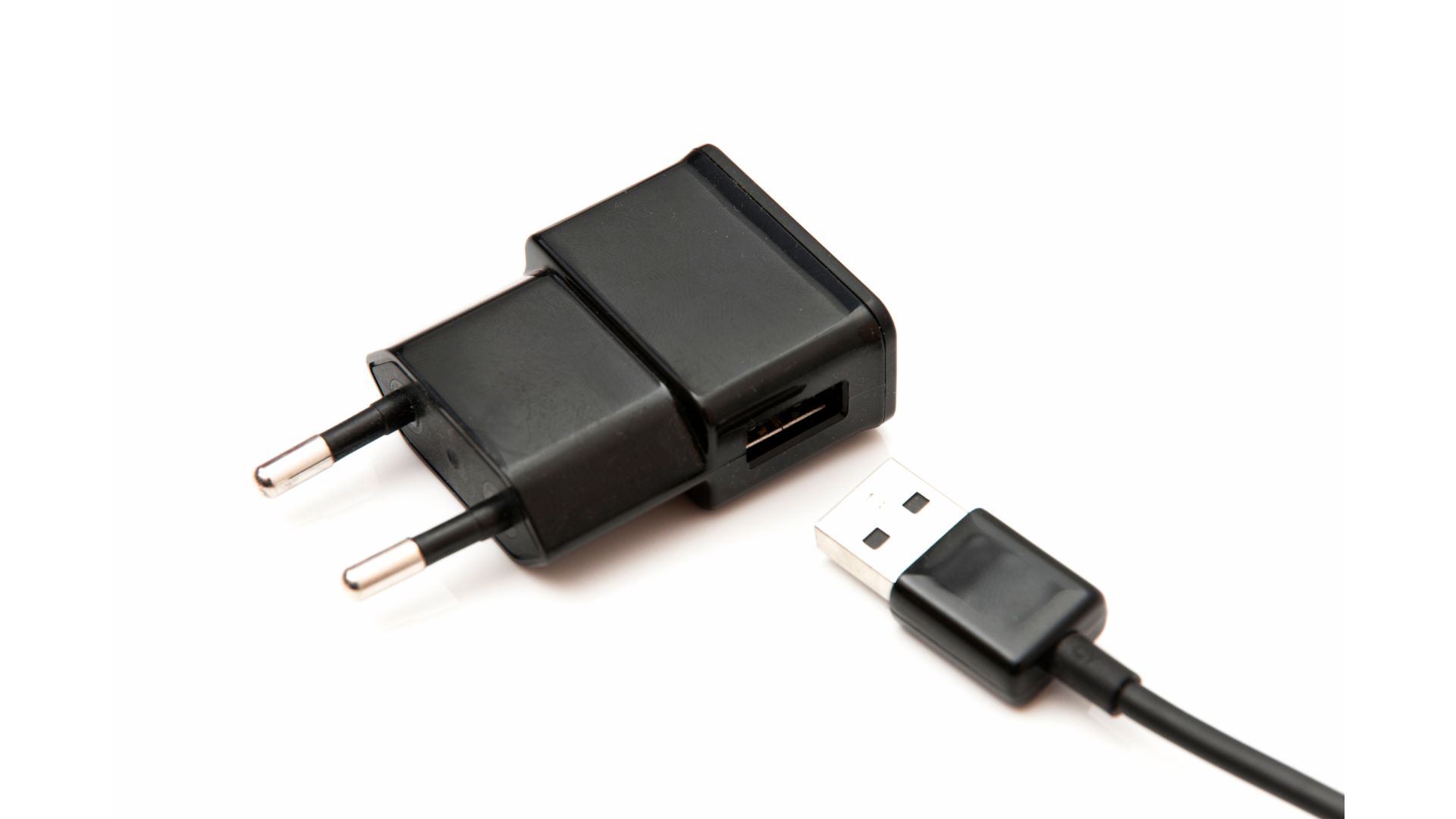Do you know how your mobile charger works?
Is Mobile Charger AC or DC?
The mobile charger is both AC and DC.
- You connect one end of the charger to the wall outlet and the other end to the device.
- Alternating current flows out of the wall outlet and into the transformer in the charger.
- The transformer steps the AC down, producing the smaller current that your device can handle.
- The AC output from the transformer runs through a rectification bridge. The bridge turns the AC into DC.
- The final checkpoint is a resistor that produces a smooth DC that charges your phone or laptop.
This guide shows diagrams representing the AC/DC conversation process. As you can see, charging systems are complicated because small devices like laptops and flashlights use direct current. And yet, the power coming out of your wall outlet is alternating current. You’re not wrong in concluding that mobile chargers are both AC and DC. This is what you should know about their inner workings:
1). AC VS DC
Direct current is the power you encountered during your high school lab experiments. It illuminated your light bulbs when you connected a battery. Direct current is called so because it moves in one direction.
Engineers use it because the direct current is easier to store, especially in batteries, hence its prominence in portable devices like phones. Direct current is not restricted to handheld electronics. You also find it in car batteries.
Alternating current stands out because it can change direction. Engineers use it in power line transmissions because it allows energy providers to use very high voltages, resulting in low currents and reducing losses in the long term.
You can see why experts still use AC in your home and DC in small devices. Both options serve a purpose. But bridging them creates a challenge.

The first image shows a USB cable that charges a mobile using a laptop. The cable is relatively straightforward because conversion isn’t necessary. The second picture shows a USB cable with a white box at the end that connects to an AC wall outlet.
That white box matters because it receives AC that it converts into DC. Those brick-like devices on your charger are not just for show. They serve a purpose.
2). Rectifier
You should keep in mind the significant difference between AC and DC. AC moves in two directions, while DC can only flow in one direction. This is where the rectifier enters the picture. It has a component known as a diode that only allows current to pass through in one direction.
The diode will manifest near-infinite resistance if the current attempts to flow in the opposite direction.
Don’t allow the workings of a rectifier to excite you. It won’t produce the proper direct current required to charge a battery. You need a capacitor to turn the pulsating output into a sufficient voltage supply.
The location of these components will depend on the type of charger. For instance, manufacturers position the converter in the car. On the other hand, you find a phone charger’s converter in the plug.
This is also true for fast-charging electric cars with DC chargers. You find the converter in the charger, which is why they are so large. The charging process is faster because the charger converts the power before sending it to the car.
The power goes directly into the vehicle’s battery, ignoring the converter. But you can’t expect DC charging stations to become the norm because their electrical demands are much higher. The price tag for production and installation is steep.
AC charging can take up to 20 minutes longer for some vehicles. However, the costs involved are much lower.
3). Voltage
The AC/DC conversation is not your only concern. You also have the voltage to consider. The average home uses its outlets to deliver 120V or 240V. But your phone requires 5V DC. You need a transformer.
Transformers have coils that either step up or step down the voltage. In this case, the transformer in the charger will step down the voltage. If you’re building your own charger, select a transformer whose voltage rating exceeds the voltage your device needs.
4). Wireless Chargers

Wireless chargers are unique because you can charge your phone without connecting a charging cable. The wireless charger is a pad with a copper transmitter coil. The phone has a similar coil, but this one is a receiver.
The transmitter coil in the pad generates an electromagnetic field. When you place the phone on that pad, the receiver in the phone uses the electromagnetic field from the transmitter coil to make electricity.
Naturally, this process is not entirely wireless because you must plug the charging pad into a power source. Additionally, charging stations and smartphones use small coils that don’t permit charging over long distances. You must place the phone on the charging pad for this process to work.
Don’t expect every mobile device to support wireless charging. The metal cover on the back of many smartphones won’t permit this sort of electromagnetic induction to occur. You need a glass or plastic cover.
But are wireless chargers AC or DC? These pads follow the same principle you find in conventional chargers. Consumers connect the wireless charging pad to a wall outlet, which provides AC. The adaptor turns that alternating current into direct current, which runs through the transmitter coil.
This is where things get interesting. The direct current in the coil reverts to AC. The current induced in the receiver coil is AC. But that alternating current must become a direct current once more before it reaches the phone’s battery.
As you can see, wireless chargers are more complex than their traditional counterparts. But the concept remains essentially unchanged.
Related post:

